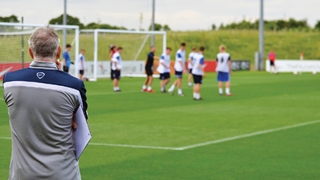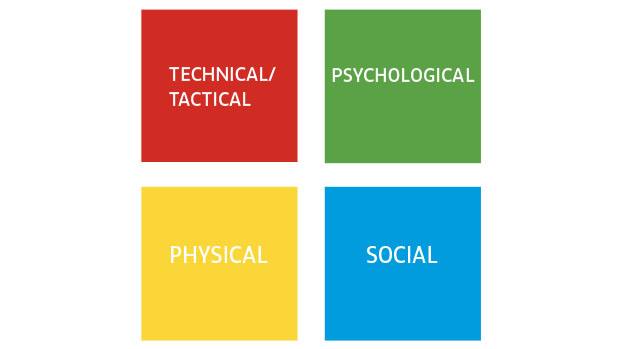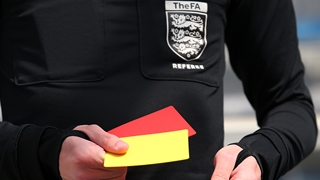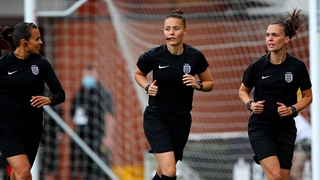
Richard Allen, FA Head of Talent Identification, tells Peter Glynn how England’s team of Talent identifiers work whilst observing players at a game.
1) Don’t try and watch every player
The scouts working as part of the England programme will be looking at one or two - at a maximum three - players when they attend a game. We don’t want the scout to try and watch everything that is happening. By narrowing the focus we can bring clarity to the task of watching individuals.
2) Look for ‘wow’ moments
For club scouts focused on the foundation phase age-groups they will be mostly looking for an aspect of the player’s game that is exceptional or unusual; something that could be described as a ‘wow’ moment. That doesn’t necessarily have to be a fantastic bit of skill but it might be a great tackle or a pass.
In terms of the scouts working at international level, we are looking for players who can show those ‘wow’ moments in the context of international football. This would involve intelligent decision-making and game understanding.
About Richard
Title: FA head of talent identification
Previous roles: 8 years as head of recruitment at Tottenham Hotspur and QPR’s academy director
Similarly, England scouts may be looking at an aspect of the player positional profiles that we have set and which are based on the England DNA. We use the FA four corner model so we’re continually assessing them technically, tactically, physically, psychologically and socially.
3) Do your player research
If a scout is watching an individual player, it is most likely that they have seen the player before and will know an individual’s strengths and areas for improvement. They will look to see if those areas have changed. If it is a player who has been connected with the England set-up this will link to their individual development plans.
4) Understanding the context
When a scout is working at the game they are mostly looking at the performance of a player on that particular day. To do so as accurately as possible it is crucial to take into account lots of factors such as: the quality of the opposition; whether the player is playing in their favoured position; the quality of the direct opponent, and lots of other things.
Individual expectations for the performance should always be set in light of this context and other factors. Once this has been established the scouts will assess the player on the day and give them a performance grade.
5) The key skill: prediction
The most important aspect of the process is considering how the performance grade links to where the player might be in the future. As such, we also look at a ‘potential’ grade to go alongside the performance grade.
It is important to get a feeling for whether the player is on an incline, experiencing plateau or having a ‘dip’- we always say ‘dip’ rather than decline because it’s important to appreciate that the players are still kids and their performances will continually fluctuate along the journey.
So, it’s about getting the scouts to think about the here and now, but to have one eye on prediction. The prediction part is the real skill.
Even if we objectify things with certain measures there will still be room for the opinion based on intuition and experience. The measures simply provide a framework for discussion.
6) The right hand side of the FA Four Corner Model
One of the main areas we use to inform our discussions is the right-hand side of The FA four corner model and the importance of the psychological and social corners. We are currently working with the FA People and Teams and Performance Education units as well as Dr Sean Warren - who is an expert in talent identification and observation - in order to understand player behaviours in much more detail.

The FA 4-Corner Model
In the same way that we look at technical strengths and weaknesses we aim to do the same but looking at psychological and social behaviours.
Obviously, that doesn’t happen by just turning up 15 minutes into a game with no other prior knowledge or research into the players.
To get a rounded picture of an individual requires observation of lots of elements of the football experience: when and how they arrive; how they interact with their teammates on and off the pitch; how they act in the warm-up; how they interact with the referee; how they cope when things start to go wrong, and lots of other things.
Sean has helped our guys with some indicators around things like confidence, communication and concentration adding to their base of game knowledge and understanding of the physical corner.
7) Early or late maturation
England talent spotters are all responsible for taking into consideration issues of perceived early or late maturation and how this may impact upon performance.
As part of the player assessment process the scout will be asked to acknowledge if the player is perceived to be ahead or behind in their maturation. This observation is made against the typical physical qualities of a player of a certain age.
A basic plus or minus rating: plus one or two years or minus one or two years, is recorded for the individual player. We acknowledge that it is not an exact science, but it is a foundation which can help put performance into context and inform our discussions.
It is a simple idea that could be adopted by coaches/talent spotters at any age-group and any level.
To learn more about The FA’s Talent Identification courses and to sign-up click here








